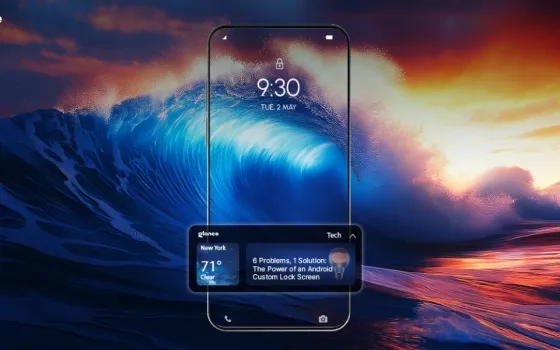Use of color in UX isn’t about just looking nice. It’s a critical component that can psychological motivate users to take an action and stimulate the senses. These wide-ranging responses may oscillate from appeal and acceptance to downright disapproval.
At some point, most of us may have exited a website simply because the site’s colors may have interfered with our overall experience. It may have had to do with the color scheme, the cultural associations we have with specific colors, or the color may have impaired the readability.
Understanding how colors and shades impact customers and implementing color theory as a regular practice can help you create more effective palettes suited for digital interactions and support navigation on the app or site.
This article examines the significance of color in UX for enabling a harmonious website with a color scheme that syncs with your customer’s expectations.
The psychology and significance of color in UX
The psychological effects of color can often be subjective. However, certain commonalities are noticed at a universal level. Concepts about the color wheel, including primary, secondary, and tertiary colors and color relationships, are relatively clear-cut. UX designers are generally familiar with these basics, incorporating them in their design work.
Nonetheless, digging deeper, due thought must be given to the emotional aspects of UX design. Though considered universal, colors such as white, black, and grey, when combined with other colors, can have a profound impact on the customer.
For example, the color you use in one particular design as the primary color may have a completely different effect when used as an accent in another design. Likewise, making the right choice between a light or dark UI impacts your site’s look and facilitates usability.
According to an abstract of a study on the impact of colors on marketing, people decide on products within 90 seconds of their initial interactions. Further, nearly 62‐90 percent of their assessment is only based on color. This highlights the importance of incorporating well-thought colors for a unique identity and evoking positive emotions for a UX that helps you accomplish desired results.
Color and its importance in cultures
Colors assume different connotations across cultures. Choosing a color palette may be less complicated when you design for a more localized customer base.
However, knowledge of color palettes based on the culture and the product comes in handy when a designer is working on the UX of a site catering to global audiences. What may seem perfectly appropriate in one culture may be inappropriate in another
For example, yellow symbolizes sunshine, warmth, and cheer for many, but in Germany, it’s widely considered a symbol of jealousy. In France, yellow is associated with negative traits, including jealousy, contradiction, betrayal, and weakness. In the African continent, yellow is associated with high-ranking people because it resembles gold. At the same time, some colors, such as orange, may be relatively neutral and accepted across all cultures.
Effects of color in UX
By now, it’s established that color influences perception. The effect of colors can be both mental and physical. While some – such as blue and green – generally induce a feeling of calm, nature, and relaxation, they are an ideal option for products and services related to these elements.
At the same time, personal experiences, preferences, and cultural sensitivities highlight the subjective context of color and the need to select the right palette for your UI/UX.
1. Color and the age-gender preference
Author and expert on color Faber Birren studied the relation between colors and their desirability among different age groups. There are some usefule insights in his study that can help while designing an app.
Considering the psychology of blue and red, he noted that blue was consistently preferred across age groups. Another significant finding was that while yellow is more preferred by children, it declines with age. In general, as people age, they favor blues, greens, and violets, which have shorter wavelengths than reds, oranges, and yellows which have longer wavelengths.
While younger audiences like lively and saturated colors, the older age groups think them to be loud and repulsive. UX for the older age groups should be careful about using bright colors, as their effervescence may affect conversions on your site or app.
In general, regarding gender, various studies continue to show a marked preference among men and women regarding their individual color choices. While men favor bright, contrasting colors, women are more inclined to subtle shades.
Likewise, though men and women both like blue and green, many women fancy purple, a color that men are not particularly fond of.
UX designers and those involved in user experience must know the age-gender implications of the color palettes they implement in their website or product.
2. Colour for improved accessibility
Did you know that color affects about 1 in 200 women and 1 in 12 men (8%)?
Of the different forms of this condition, the most popular is red/green color blindness. This category of people experiences difficulty recognizing reds, greens, and yellows of similar values, especially if the green has less blue and more yellow components.
For UX designers, this implies that users having color blindness may not be able to make out images or words where colors with low-value contrast are used.
Notably, this can affect your winter sales when using the traditional festive colors – red and green.
So if a significant number of your male customers cannot see the words on the button callin them to ‘Buy Now,’ you could be losing opportunities to increase sales.
Increasing the contrast value between colors can help you create a better UX and improve customer accessibility on your app or site.
3. Color for visual order and conversion
In a digital environment, businesses must have control over ‘where your users look.’
Colour plays a crucial role in creating a unique brand identity, reflecting the philosophy and quality of your products or services. Furthermore, color in UX and behavioral design influences customers where to look. Effective use of color makes your navigational system more user-friendly and enhances customer engagement on the sites.
UX designers can effectively control user attention by manipulating the salience of visual design elements.
When it comes to the influence of colors on conversion rates, the verdict remains divided, with some advocating the use of bright and bold ‘red’ and the other group favoring ‘green; the universal signal to ‘go ahead.’
Several A/B test results show the significance of color for the CTA button for signups. HubSpot (then known as Performable) famously ran a test predicting that the green CTA button would perform better, only to realize that the red button generated 21% more clicks than the green.
They did issue a word of caution. They mentioned that it could just be their audience preference and nothing more, or that the button caught the user’s attention as it was the only red object on the page. Moreover, they clarify that the test result shouldn’t get everyone changing to the red button.
In a nutshell, when designing for a superior UX, there is no fool-proof solution. However, there are some ways to work around it.
4. Manage contrast and brightness for readability:
When designing a web or mobile app, the interaction points such as hover and active states should reflect the context of colors. If you want your customers to respond or click on something, use a contrasting color to make it stand out. So, if your site has a lot of red, the red button is bound to get camouflaged, despite the same red button performing well in another product’s A/B test.
Likewise, your use of contrasts should add value. Light color won’t be as noticeable on a dark background as compared to a dark color on a light background. Apply this rule to your copy on the button too.
Similarly, most users find bright websites more user-friendly and memorable. These are some simple ways to make your app more engaging and spontaneous.
Leveraging color in UX for your brand
When designing your site or app, your color palette should reflect your brand values. At the same time, you ensure that while trying to blend in, your color scheme should not replicate your competitor’s. This could lead to identity confusion, and you could lose existing and potential customers.
Colour theory encompasses art and science. Though there are generalizations, color can be perceived differently by playing around with combinations and hues and using them differently. At the same time, understanding the role of color in enhancing the UX on your site or app can help you build color palettes for any brand or product. Here’s an overview of what the main colors represent.
Red — An intense color, commonly representing danger, passion, and excitement. Evoking strong responses, it can be lightened to pinks for a more feminine appeal and deepened to maroon for a more moderate look.
Blue — A color often associated with loyalty, the brighter hues represent communication, while the deeper hues reflect depression or sorrow. Furthermore, as blue is one of the most-liked colors, many companies incorporate blue shades in their branding.
Green — While evoking wealth and tradition, on the one hand, green is also associated with environmentalism, nature, and growth.
Yellow — Symbolizes happiness, optimism, and cheer and resonates with designs for children and adults alike. While the pastel shades are often used to denote gender-neutral baby colors, the brighter hues are typical in creative compositions. The deeper shades of yellow resemble the color gold, primarily associated with success and prosperity.
Black — Reflecting high-class luxury, black in some cultures denotes sorrow and pessimism. Based on the combination of other UX colors in the scheme, black can impart a contemporary or conventional, formal or informal touch to your app or site.
White — A color that denotes purity and positivity, white is a favorite color in minimalist designs due to its no-frills and straightforward look. White integrates well with other colors that are used in conjunction with it.
Out-of-the-box UX color
Sometimes a completely fresh, innovative pairing of UX colors can instantly get your brand noticed. Though unconventional and a bit complex, it’s not as difficult as it sounds.
You could start by adding innovative accent colors to your design. For example, a website that uses a traditional palette of deep blue and grey could infuse some light green accents to set it apart from competition and industry clutter.
Likewise, using peaches and yellows in a space dominated by blues, reds, and greens are examples of some innovative use of UX colors by websites.
The 60-30-10 Rule
The 60-30-10 Rule is a simple yet popular theory for developing well-balanced and visually appealing color palettes.
Per the rule, one color —most often something neutral ( literally or psychologically)—accounts for 60% of the palette. They must consider the second color to take up around 30%. And, use the third as an accent for the balance of 10% of the design.
This 60-30-10 rule helps you quickly experiment with innovative color palettes while staying with the general norms of your industry or brand.
Infusing hints of surprise-colors can enhance your UX, making it more i8 engaging than your competition. It could also open up new avenues for better UX than the existing templates, thus creating a unique and rewarding user experience that ultimately benefits your business.
Conclusion
In this article, we explored the role of color in creating unique user experiences on your app or site. Taking a relook at your color scheme, the age and gender color preferences, traditional v/s innovative color associations, and accessibility concerns can help you realign your site’s color for a more productive UX. Starting with the basics, you can leverage your experience to create more unique and effective palettes.
A strategically conceptualized color palette, infused with unexpected hues, can deliver significant psychological advantages for a better UX. At the same time, understanding your customer’s expectations are crucial to creating a product or service that yields desired results for your business.

















